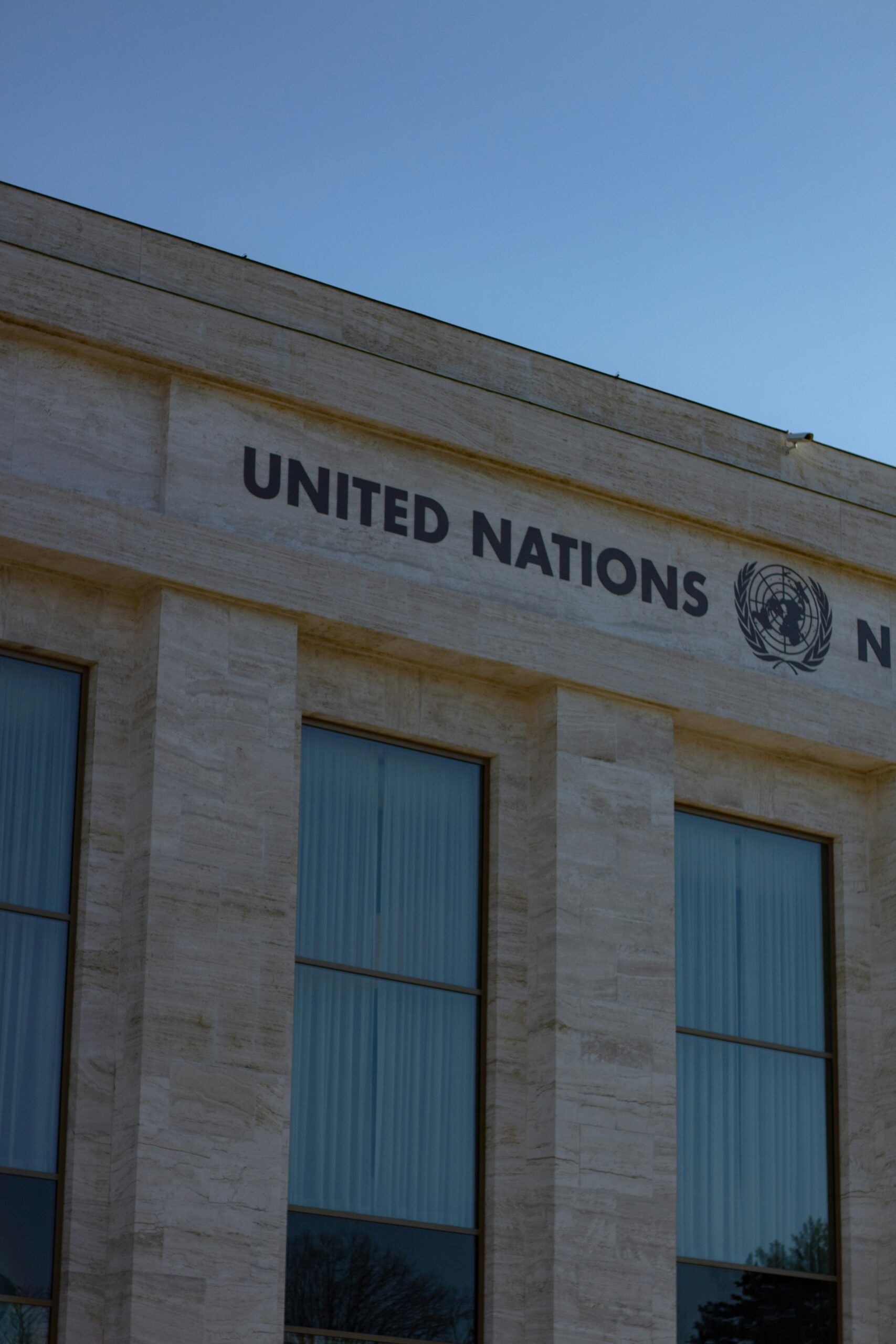In 2015, multiple reviews of the UN’s peace efforts have added to the collective realization that UN peace operations – designed in the 1990s to support post-civil war peace deals – may have reached their limits for maintaining international peace and security. A UN High-level Independent Panel on Peace Operations has just published its report on the UN’s peace and security efforts. A commission led by Madeleine Albright and Ibrahim Gambari has concluded a panel report on global governance. A study will shortly be released on the implementation of Security Council resolution 1325 on women, peace and security. Amidst all this activity, an advisory group of experts released in June a new independent review of the UN’s peacebuilding efforts, The Challenge of Sustaining Peace.
None of these reviews are revolutionary in their recommendations. What they do is coherently synthesize known problems and deficits. They recognize that great power politics is not favorable to a strengthening of the UN; they recognize that today’s transition to a multipolar order makes consensus-building on UN reform extremely difficult; and they recognize that the UN is but one among many international peace, security and development actors. Indeed, many of these reviews’ recommendations have been circulating for years, but they have usually not been implemented for political reasons.
The Challenge of Sustaining Peace is a robust analysis of the UN’s challenges and does offer sorely needed recommendations. But international attention must now focus on implementation. Ideas are now required for early actions and commitments that can build a longer-term consensus on deeper changes to the UN. Before change, however, must come debate.
The Challenge of Sustaining Peace feeds into the UN’s ten-year review of its “peacebuilding architecture,” which marks one decade since the 2005 World Summit, whereby world leaders made a bold commitment to establish a just and lasting peace all over the world. They established a new UN Peacebuilding Commission (PBC) with the purpose of helping countries transition from war to peace. The PBC and the Human Rights Council were launched with great fanfare as major new UN institutions. They were the institutional legacies of then Secretary-General Kofi Annan, who was determined to implement important lessons of Srebrenica and Rwanda: a need for more resolute UN monitoring and action on human rights violations, and more coherent and effective international responses to conflict.
The PBC’s founders hoped it would unite international actors in providing more coherent and sustainable attention to maintaining peace. Ambition extended to the disjointed peace and security, development, human rights and humanitarian arms of the UN, as well as the wider international system. A Peacebuilding Fund was established to provide emergency assistance and start-up funding for peace plans. A Peacebuilding Support Office (PBSO) was charged with providing analysis, with building the skills of the whole UN system, and with supporting international coordination.
Ten years on, The Challenge of Sustaining Peace echoes the diagnosis of 2005: there is a gaping hole in the UN’s machinery for sustaining peace. It adds that there have been serious shortcomings in the UN’s efforts to fill it. The review’s authors argue that too many parts of the UN system work in silos, all contributing disjointed pieces to an ever more complex puzzle of local and transnational conflicts, and UN and other international responses.
At the organizational level, the authors argue that the different arms of the UN still fail to work together, and the PBC and PBSO have often added to the silos rather than rise above them to build international coherence. The links between the UN and other parts of the multilateral system are often ad hoc and thus fall short of serious and systemic global coordination driven by the UN.
At the policy level, they argue that the UN’s approach to sustaining peace is deeply flawed, tending to focus on supporting governments to the detriment of building trust between states and societies. Too often, the UN confuses “national ownership” – which is the sine qua non of an enduring peacebuilding process – with supporting ownership by a narrow group of governmental elites. The review also underlines that the UN makes no coherent or dedicated monitoring effort to help countries prevent conflict in the first place. And the review argues that the UN’s development and human rights actors pay insufficient attention to building inclusive development processes that can sustain peace.
The result of these gaping policy and organizational holes is that funding and attention is not sustained for the time needed to restore trust between states and societies, or to build inclusive and functioning institutions that prevent further conflict.
The Challenge of Sustaining Peace makes a series of recommendations for addressing the UN’s gaping holes:
- Charge the Peacebuilding Commission with bridging the divide across all UN inter-governmental bodies (the Security Council, the General Assembly, the Human Rights Council, and the Economic and Social Council) to better support conflict prevention and sustainable peacebuilding.
- Make major improvements in the analytical capacity and authority of the PBSO to strengthen the PBC and the UN system.
- Introduce significant improvements to the UN’s skills, knowledge and approaches on the ground for sustaining peace, as well as better operational planning: longer UN mission timelines, better transition planning between the spectrum of UN peace and development operations, and joint planning and delivery for sustaining peace in the long term.
- Build partnerships with other global and regional multilateral institutions to help sustain peace, especially international financial institutions (IFIs) and regional organizations.
- Provide more predictable funding for peacebuilding programs over the time it takes to develop institutions and resolve the drivers of conflict.
- Focus more efforts on building national governmental and non-state leadership, and encourage inclusion in processes to sustain peace.
All of these findings are complementary with the parallel review of peace operations, Uniting Our Strengths for Peace, which makes four main points: the UN must recognize the primacy of national politics in developing solutions to conflict; it must make more flexible use of the whole UN system and the whole spectrum of tools for sustaining peace (including and beyond military operations); it must build stronger partnerships with key actors (such as multilateral development banks and the African Union); and it must be more focused on the field and on people (not the New York machinery).
The problem is that The Challenge of Sustaining Peace and Uniting Our Strengths for Peace both remind us that too little has changed since previous reviews. The General Assembly last reviewed the Peacebuilding Commission In 2010, recommending very similar, although less ambitious, reforms to peacebuilding. The UN Security Council and General Assembly took note of the 2010 review’s recommendations, but few, if any, were implemented. The reasons are political, and sceptics − including this author − have expressed reservations in the past about the depth of political will at the UN to address shortcomings.
When attempts leading in to the 2005 World Summit to expand the Security Council’s permanent membership failed, the PBC quickly became a safety valve for international discontent. The bargains over the PBC’s mandate in the months following the Summit reflected these tensions. The PBC was given little authority and decision-making powers, and burdensome New York-focused procedures quickly mushroomed. The successes enjoyed by the PBC had been driven by good inter-personal relations, but not by a comprehensive UN drive to strengthen capacities for sustaining peace on the ground.
While both reviews offer robust analyses of many of the problems and solutions, neither review separates out the more feasible “quick wins” from an assessment of the steps needed to achieve more contentious structural change in the UN. International attention must now focus on mapping out those potential actions, acting quickly on the “low hanging fruit” in 2015 and 2016, as well as identifying steps necessary to transform the UN system in the longer-term.
“Early Wins”?
The UN’s ten-year peacebuilding review process is split into two parts: an independent review, and inter-governmental negotiations. The Security Council and General Assembly are expected to adopt resolutions on The Challenge of Sustaining the Peace later this year. In parallel, Ban Ki-moon is expected to produce a report in response to Uniting our Strengths for Peace. A response that incorporates recommendations from both reports would make most sense, but there may be structural impediments to this. While Uniting for Peace is a report commissioned by and for the Secretary-General, Sustaining the Peace is not. The peacebuilding review is an inter-governmental process. Ban’s implementation report may make references to the Review, but will probably not address it in any detail. In confining his response to peace operations, he would be perpetuating the existing the problem: a UN that works in silos.
With an integrated approach, the Secretary-General could have listed a range of quick win proposals and commitments focusing on strengthening the UN on the ground. As Challenges to Sustaining Peace recommends, the Secretary-General could commit to agreeing on “peacebuilding compacts” upfront with countries exiting conflict. These would govern the timelines and benchmarks for mission transitions. He could task the UN on the ground with reassessing its approaches and deepening its knowledge base on building state-society relations. He could task his leaders on the ground to work with national actors to develop sustainable strategies that are intended to far outlive any given UN mission. He could commit to deepening his partnership with the World Bank, as well as other existing and new multilateral banks, to drive significant efforts into inclusive development. A UN that empowers all national leaders, that empowers women and youth, and that helps to leverage larger and more transformative investments in solutions such as infrastructure and job creation, is a UN that could have a more lasting positive effect on people’s daily lives.
In these regards, UN leaders can and must all push on open doors in 2015 and 2016. In Addis Ababa in mid-July, the Third International Conference on Financing for Development committed to ensuring funding for the poorest, most vulnerable and conflict-affected countries (although no new resources or concrete plans were put on table). In September in New York, new Sustainable Development Goals (SDGs) will be adopted to replace the Millennium Development Goals (MDGs). The SDGs contain a number of radical changes from the MDGs, including a new goal for building peaceful and inclusive societies, access to justice for all, and inclusive, accountable and effective institutions. While the world does not yet know how to achieve this goal, it reflects an international consensus on the links between peace and development that did not previously exist.
The peaceful societies goal opens up a significant global opportunity to align peace agreements, national development and peacebuilding priorities, and international assistance, and to conduct better monitoring and prevention of risks to development. This emphasis on development draws in a far wider range of pivotal actors, including rising powers and new multilateral development banks, civil society and the private sector. The UN’s challenge is to mandate and empower its leadership on the ground to work with all actors and resources to sustain the peace. In 2015 and 2016, Ban Ki-moon could identify pilot countries for rolling out a new UN approach.
In 2016, Turkey will host the World Humanitarian Summit. Here too, countries, the UN, civil society and the private sector can agree to joint solutions for monitoring and preventing emergencies, for reducing global risks, and for sustainably resolving protracted displacement and crisis.
In actively taking advantage of these opportunities, the Security Council and General Assembly might mandate some up-front “no-brainer,” “bite-sized” changes to the UN. They could mandate the PBC to work with the UN’s inter-governmental bodies on sustaining the peace across conflict-affected countries (the review recommends a range of sensible ad hoc working practices). The Security Council could request the PBC’s advice on progress against transition benchmarks in conflict-affected countries. It could also mandate the PBC to incorporate the UN and international system to promote coherent efforts towards sustaining the peace across countries on the Council’s agenda. The General Assembly and Security Council have weak track records when drawing on the PBC. But if member states want to expand partnerships and encourage more inclusivity, it would be wise to give the PBC teeth, and hold it accountable for progress.
The General Assembly, for its part, could exact more coherent performance from the UN development system for supporting peaceful and inclusive societies through the UN Quadrennial Comprehensive Policy Review (a review of the UN’s global development performance, functions and resources), which will next take place in 2016.
Longer-Term Structural Change Of The UN
While quick wins need to focus on action on the ground, longer-term dialogue and consensus should be built around deeper structural transformation of the UN. These more difficult tasks of filling the UN’s gaping holes will realistically only fall to the next Secretary-General from late 2016 onwards.
She could organize dialogue around creating a system-wide model for improved monitoring response to conflict risks. While few if any member states will object to the concept, the practice may prove contentious because the current application of the ‘sovereignty’ principle makes it difficult to take early action before the onset of conflict. Building consensus around increased investment in development and conflict prevention would be more straightforward. In this regard, the new Secretary-General should focus on building strong links between the UN and the rising powers and new development banks. As these entities’ global roles in peace and development grow and evolve, they are in learning mode. The next five years present a window of opportunity to build strong partnerships beyond the Bretton Woods order.
The UN secretariat’s structures and capacities could also be reviewed. Given sufficient political will, the reset button could be pressed on PBSO, potentially addressing the coherence of the UN secretariat by merging multiple departments with duplicate responsibilities. But here too, reform will be tough. Hostility and power politics from within the Secretariat will slow reforms unless countries are seriously willing to forgo control of national appointments to the existing structures. The case has yet to be made that a significant reform exercise in New York would lead to the kinds of changes to people’s lives that would merit a Secretary-General’s finite political capital. Perhaps it would be better if the next Secretary-General focused on empowering her people on the ground, advancing “bite-sized” changes to the bureaucracy in New York.
New tools and responses will also be needed to address emerging drivers of conflict, including the growth of violent extremist movements that are impervious to the UN’s current approaches for mediation, conflict resolution and development. Here too, international consensus must first be built on the drivers of contemporary conflicts and appropriate responses. These challenges will continue to fall to the UN on the ground. Some of the UN’s responses may be operational, but many may also be in the normative space. There are significant gaps in international norms on cyber security, regulation of new weapons technologies (such as 3D printed weapons), maritime security, and tackling illicit financial flows, among many other areas that are key to contemporary conflicts.
None of this year’s UN reports will be headline grabbers. They rightly focus on the UN’s operational coherence, management and politics, because these are the building blocks to improving the UN’s performance. What actors need to do now is articulate clear pathways, achieving some quick wins in 2015 and 2016, and instigating longer-term processes towards deeper structural reform. In the coming months, candidates for Secretary-General should articulate their campaign priorities. How to fill the UN’s gaping holes for sustaining peace must surely come high on their priority lists.
*I am grateful to colleagues at CIC and participants at the Beijing Conference on “Emerging Views on Global Peace Practice” (hosted by AFSC, QUNO, SSRC and UNA-China) for their comments, insights and discussions during the preparation of this essay.
Sarah Hearn is an Associate Director and Senior Fellow for Global Development at the Center on International Cooperation. | Twitter: @SarahEHearn


